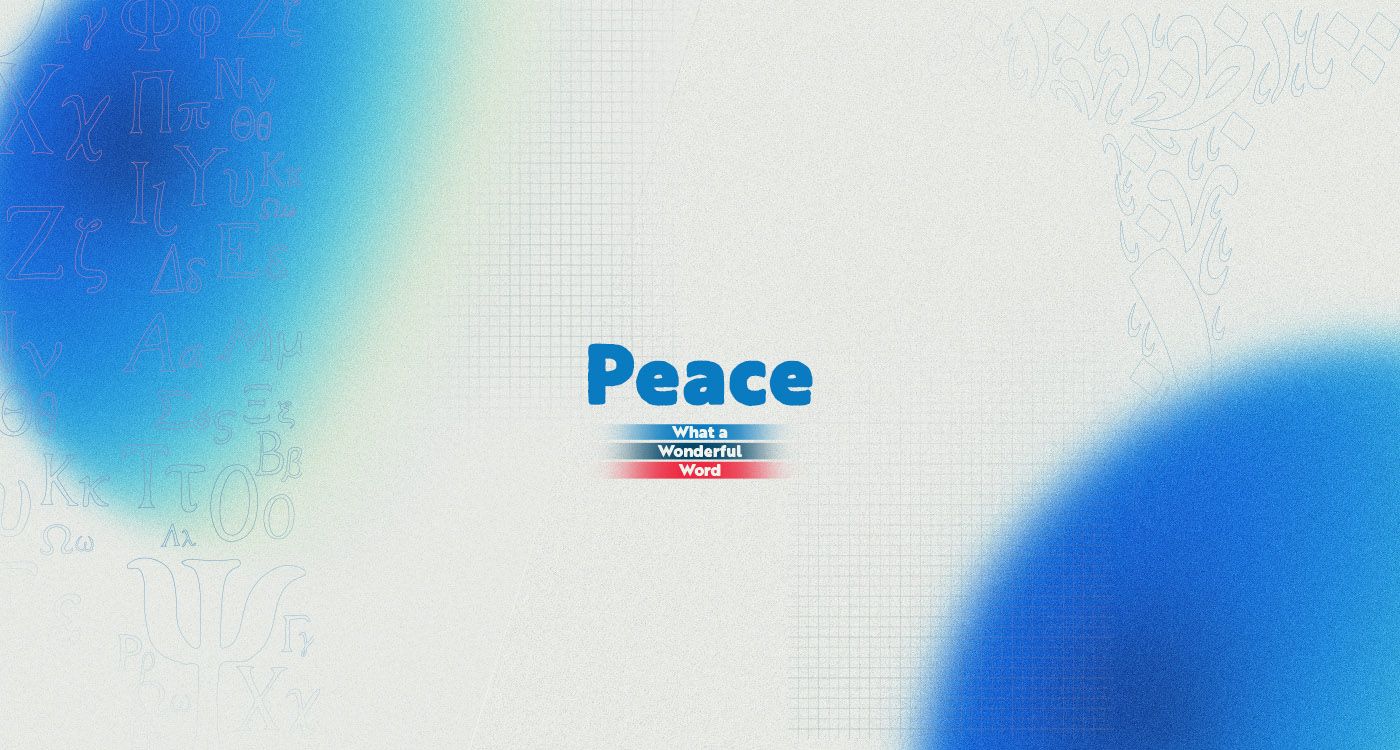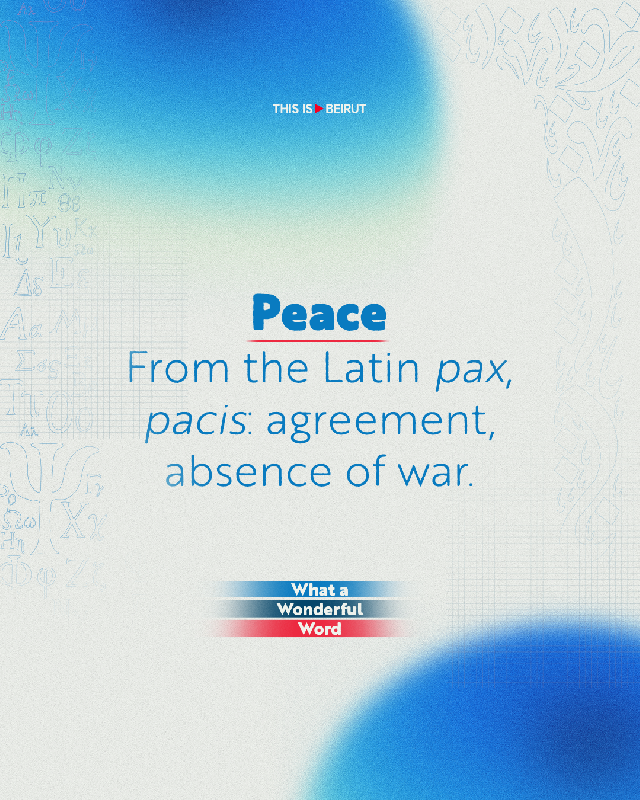- Home
- What a Wonderful Word
- 'Peace:' A Word of War?

©This is Beirut
Since his return to the White House, Donald Trump has made “peace” a centerpiece of his rhetoric, promising quick fixes to long-standing wars. But the word peace carries a complex legacy, rooted in conquest as much as harmony. What if, behind its soothing appeal, this ancient word reveals more about conflict than resolution?
Since returning to power in January 2025, President Donald Trump has multiplied his promises of peace: an end to the war in Ukraine “within 24 hours,” a global deal in the Middle East, including Gaza. But when Trump speaks of peace, he taps into a long rhetorical tradition where peace often rhymes with order, or even submission. Behind this reassuring façade, what does the word “peace” really tell us about our history, our conflicts and our illusions?
An Ancient Word, a Shifting Ideal
The English word “peace” comes from the Latin pax, pacis, which originally referred not to a stable state of calm, but to the act of making peace – the resolution of conflict through agreement. It shares roots with pactum, the Latin term for “agreement” or “contract,” from which English also derives “pact.” At its origin, peace is less about natural harmony and more about a negotiated balance – often fragile, always reversible.
In ancient Rome, pax denoted an absence of war, usually imposed by power. The famed Pax Romana described a long era of stability under imperial rule, built on the subjugation of conquered peoples.
The word entered Old English as paes or paece from the Latin via French, gaining its modern spelling and pronunciation in Middle English. In medieval texts, “peace” might refer to domestic tranquility, the “King’s peace” (a royal guarantee of safety) or even spiritual inner peace. It could be legal, social or divine – but always conditional.

Fragile Promises
It was only from the 15th century onward, in an emerging Europe of colonial empires, that the first multilateral treaties began to take shape, laying the groundwork for what we now call international law.
Over time, particularly after Europe’s great wars, these frameworks sought to regulate warfare and promote lasting peace. The Peace of Westphalia (1648) was a key milestone, later followed by the League of Nations in 1919 and the creation of the United Nations in 1945.
From that point on, peace became a universal political goal, sometimes idealistic, often contested in its implementation.
Peace in Contemporary Discourse
Today, “peace” wavers between two meanings: a negative peace, defined as the absence of violence, and a positive peace, seen as an active cooperation and harmonious coexistence.
In the Middle East, the word stands at the heart of every negotiation, but its interpretation varies. For some, peace begins when the guns fall silent. For others, if injustice, occupation or poverty persist, there is no true peace.
An ideal for some, a mask for power relations for others, peace is always the result of an act – political, moral or religious – more than a natural condition. It requires agreement, thus effort. In that sense, peace is less the opposite of war than its continuation by other means. Always precarious, it must be rebuilt again and again.


Comments